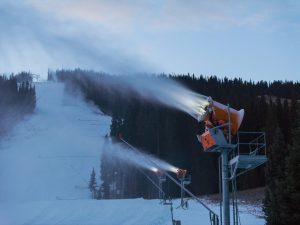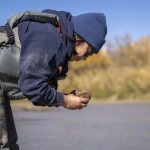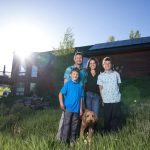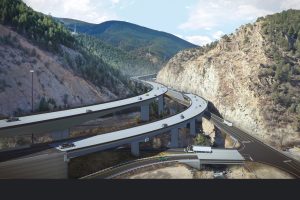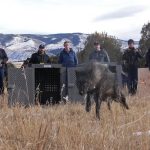Roaring Fork Valley conservation celebrates ‘first-of-its-kind’ partnership

Pete McBride/Courtesy photo
In 2022, Aspen Valley Land Trust announced a “first-of-its-kind” partnership with The AES Corporation to conserve critical wildlife habitat through the Roaring Fork and Colorado River valleys.
The partnership, which is supported by Colorado Parks and Wildlife, has already had significant impact in Eagle and Garfield counties, with work beginning in Pitkin County, too.
The partnership brings together conservation and energy development.
“You can’t solve climate change without protecting habitat, and you can’t protect habitat in perpetuity without solving climate change,” Torrey Udall, AVLT deputy director, told The Aspen Times. “Those two goals are inseparable: Communities and wildlife need resilient landscapes and resilient landscapes depend on reducing the pressures of a warming climate.”
According to Udall, collaboration between AES, CPW, and AVLT “shows that renewable energy development and land conservation aren’t competing priorities but can reinforce each other while we move quickly and thoughtfully.”
In a press release, AVLT Executive Director Suzanne Stephens said, “This partnership is special because it enables AVLT to move quickly and in innovative ways when high-impact opportunities arise. By working together with AES, we’re supporting responsible energy development and ensuring that critical habitats remain intact for future generations, ultimately achieving mutually shared goals of investing in a healthier future for all.”
Sunrise Rundown: Headlines. Breaking News. Local Updates.
What’s happening in Aspen, in one click.
Sign up for the Sunrise Rundown at AspenTimes.com/newsletter
Thanks to the collaboration, Eagle County recently saw what the press release calls “one of the largest and most impactful conservation projects ever completed in the Roaring Fork Valley.” AVLT originally pursued conservation of Three Meadows Ranch — 4,251 acres of intact habitat and historic ranchland — in 2018, according to Udall.
“When the property resurfaced years later, AVLT, Eagle County, and Pitkin County moved quickly to seize the opportunity to protect it permanently,” he said.
AVLT and AES are also currently engaged in a number of private conservation opportunities across Garfield County, he noted, from stream restoration efforts that will improve watershed health to long-term solutions for keeping historic agricultural properties intact alongside large tracts of natural habitat supporting deer and elk migration.
Udall confirmed that areas south of Silt and Rifle are focal points of the projects, where high connectivity between conserved lands and high pressure to carve up habitat and agricultural lands pervades.
AVLT and AES, with support from CPW, are also actively working with agricultural producers in Pitkin County who have properties that support “both the valley’s rural character and natural systems,” he said.
“These are some of the most iconic working lands in the county, where grazing and hay production coexist with natural habitat and critical movement of wildlife,” he said.
The partnership also celebrates the state of Colorado’s first voluntary Solar Mitigation Fund, which AES voluntarily contributed $400 per acre from its High Mesa Solar project to. Funds from this are restricted to CPW-approved conservation projects “that replace or enhance wildlife habitat comparable to what’s impacted by solar development,” he explained.
CPW approved the use of $26,000 to supplement AVLT’s Three Meadows transaction and management costs.
“CPW is pleased to have helped connect Aspen Valley Land Trust and AES in this impactful partnership,” read a prepared statement from CPW in the release. “As only the second voluntary mitigation habitat offsetting agreement in Colorado, and the first to bring together CPW, a land trust, and a solar developer, this collaboration offers a promising model for how development can actively contribute to conservation efforts.”
Udall highlighted riparian habitats, farm and ranch lands, migration corridors and seasonal ranges, and areas resilient to changing conditions are the highest priority wildlife areas in the RFV that this collaboration will continue working to identify and protect.
To learn more about the joint efforts, visit avlt.org/campaign.html.
FIS confirms Stifel Copper Cup after positive snow control
The International Ski Federation (FIS) announced Sunday the World Cup ski races slated for Nov. 27-30 at Copper Mountain have been confirmed following a positive snow control.

